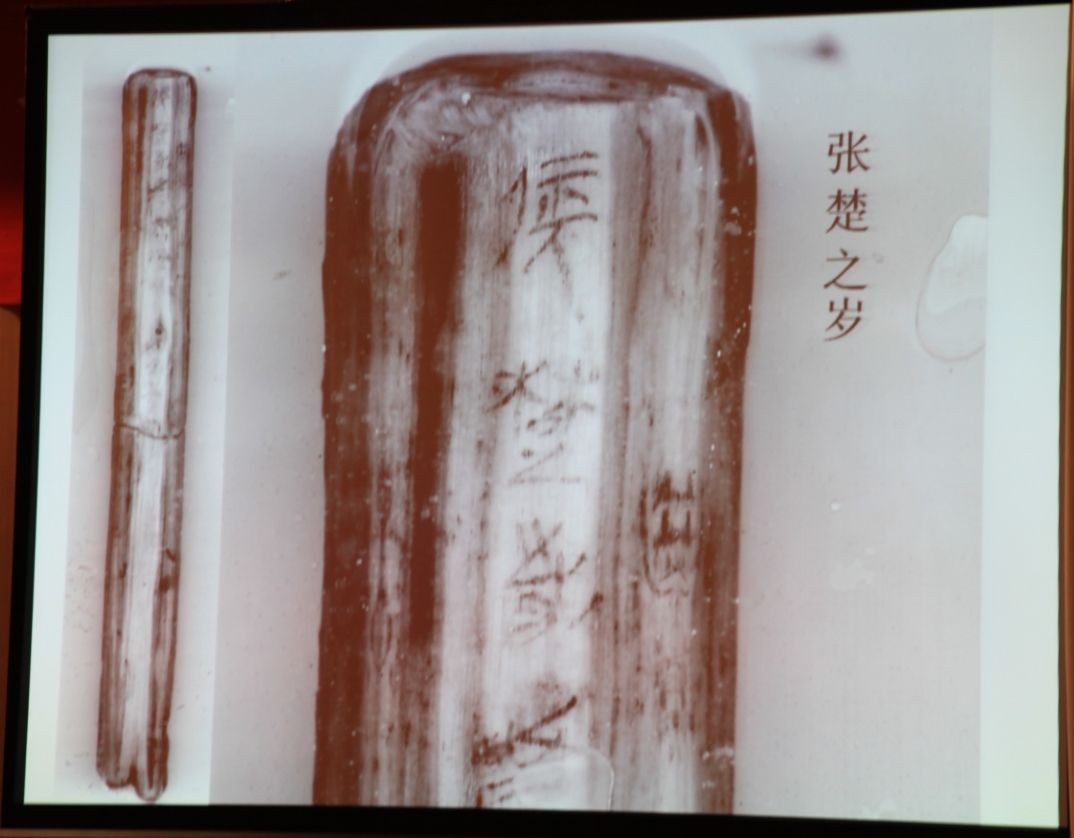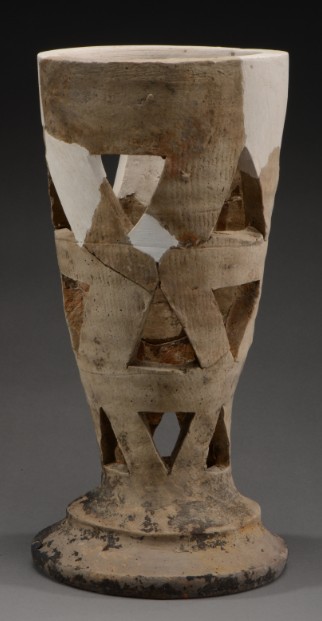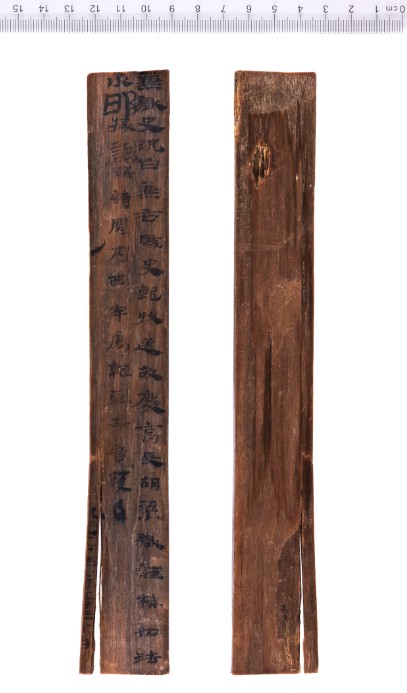Enormous Inscribed Wood and Bamboo Slips Discovered in Ancient Wells at the Tuzishan Site, S China
From:Chinese Archaeology NetWriter:Date:2014-04-22
To support the infrastructure project, an excavation to the Tuzishan site in Yiyang’s downtown, Hunan Province has been conducted jointly by Hunan Provincial Institute of Cultural Relics and Archaeology and Cultural Relics Office of Yiyang city since May 2013. The site is in poor state of preservation. Totally 1,000 square meters in area has been uncovered, yielding about one hundred remains and a great deal of tiles, various bricks, ceramics, wooden objects, lacquers, iron and bronze objects, animal and botanic remains.
Archaeologists found 16 ancient wells, which measure 1.1-1.5 m in diameter, 9-10 m in depth. A lot of objects have been collected from the wells, among which those made of bamboo and wood are in better state. The most valuable finds are 15,000 pieces inscribed slips from 11 wells.
These inscribed slips document official affairs and personal activities of Yiyang County Governments of varies periods, which involves population, farmlands, products, taxes and laws, covering the periods of the Warring States, Qin Empire, the Reign of Zhang Chu, Western and Eastern Han dynasties, and Wu State of the Three Kingdom period. The materials used include China fir, cork pine, Manglietia hainanensis, Torreya grandis, Nanmu, Platycarya strobilacea, Phyllostachys as identified by experts from Chinese Academy of Forestry.
Slips from the Chu State period are collected from Well No.4 and Well No.9. The former has a three-layered square wooden structure on the bottom and 8 pieces of slips. The inscriptions on them document cloths and textiles, written in Chu State characters.

Slip No.1 inscribed with a proclamation during the reign of Qing’s second emperor Hu Hai
The Slip No.1 from the third layer of Well No.9 is a proclamation issued in the first month during the reign of Qing’s second emperor Hu Hai. The text stresses the legality of the new emperor’s succeeding to the throne, and also makes reformation to benefit the masses. In the text, when the title First Emperor appears, it is always put at the very beginning of a new line, a form of imperial edicts that followed by latter dynasties. It is considered to be the earliest imperial proclamation hitherto found.

inscribed with characters “Zhangchu zhi sui”
A Gu vessel inscribed with characters “Zhangchu zhi sui” was found in Well No.8. The regime Zhangchu was established by Chen Sheng and Wu Guang. The vessel with such a reign title meant the localities’ support to the insurgence. It is the only affirmative material from the Zhangchu period.

slips from Early West Han dynasty
Slips dating to early Western Han were found in Well No.1, No.5 and No.7, which are archives of the then Yiyang County Government.
Well No.1 and No.7 both have ceramic structure to reinforce the well’s wall. The slips bear inscriptions of “Wu Zhu ba nian”, the year number of Changsha Kingdom. Slips from Well No.5 deal with population and foodstuff. Slip No.13 bears also a record of the exact date, 161 BC. The Well No.7 yields about 500 pieces of slips. The contents include the dates, official titles, events and names of recorders. Some ancient town’s names have been mentioned, such as Yangma, Xiazi, Weiling and Duxiang.

pottery incence burner
The Well No.3 yields wooden and bamboo slips from late Western Han period, which are in good state of preservation, measuring 23.5 cm long and 1.3-2.8 cm wide. Some large ones measure 49 cm long and 6.5 cm wide. Some texts are written in ink with brush pen. There are exact dates and reign titles of Emperor Han Aidi. The contents relate to archives of the Yiyang Government, including judicial documents and personnel managements.
Slip No.1 from Well No.3 is the hitherto found earliest large wood slip, measuring 49 cm long. The inscription documents a Yiyang official Zhang Xun’s embezzlement and his judicatory adjudication.

slips from Middle East Han dynasty
The well No.6 produces about 1,000 wooden slips dating to late Eastern Han and Wu State period. Other objects include some celadon and bronze mirrors. The slips relate to accounts of foodstuffs, some reign titles like Yongshou, Jian’an and Jiahe have been mentioned.
Records of slips from Well No.6 are parallel with that of the ancient annals, providing supporting materials for studying ancient social conditions.
Investigations to the periphery of the Tuzishan site reveal that there is an ancient city-site at the vicinity, which is in rectangular shape, measuring 200 m long and 300 m wide. It should be the exact place where the Yiyang County was located from Chu state, Qin, Han dynasties to Tang and Song dynasties. The Tuzishan is put at the center of the city-site. (Translator: Tong Tao)

